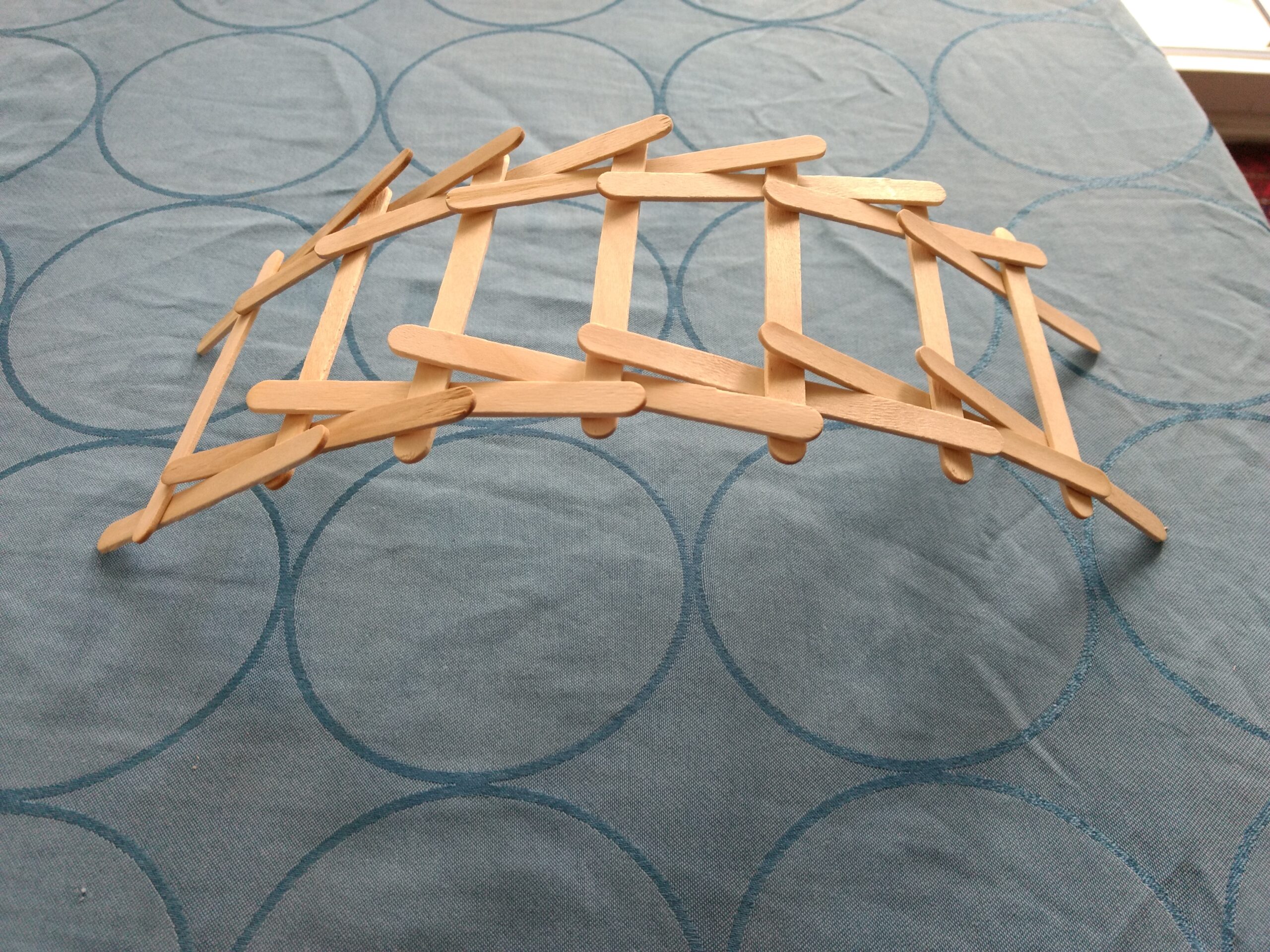023 – Leonardo Bridge
Construction of an arch
Loadable bridge made of wooden plates
Introduction to:
Braiding, rigid components
Material:
- Popsicle sticks = sticks for ice cream / thin plates made of wood.
- commercially available
Instructions:
- Lay out two sticks as center supports in parallel. Clamp two more sticks as longitudinal beams over the first center beam and under the second center beam.
- Clamp two more stems, mirrored to the last two, between the center beams.
- Add a new center beam so that it clamps the longitudinal members between them with the nearest center beam.
- Add two popsicle sticks lengthwise to reproduce the arrangement from 2.).
- Step 3 and 4 applied again
- Step 3 and 4 applied again
Tips:
- The bridge can be extended further by adding new sections through steps 3 and 4.
- Water increases the frictional force of the wood and thus increases the stability of the structure, and simplifies its construction.
Explanation:
- The type of arrangement causes a balance of forces at each connection of the popsicle sticks to each other.
- Through the point of support, the longitudinal beam exerts a supporting force FA perpendicular to its cross section. This force acts at the center of gravity S of the cross member.
- The supporting force can be split into a component FG perpendicular to the lower cross member and a component FZ parallel to the member.
- The weight force on the beam is compensated by its bearing force FT, thus preventing deflection or even breakage of the beam.
- The tensile force on the beam is compensated by the frictional force FR between the longitudinal and transverse beams, thus preventing any possible sliding apart of the beams.
- Both quantities are material-specific properties.
Learning levels:
Elementary school:
Try out in teamwork, build (can be designed as a competition); simple understanding of construction, embedding in Leonardo da Vinci context possible.
Secondary 1:
Comparison: wet, dry stems → friction force as principle of self-supporting bridge; problem of maximum length with too many construction elements; build and compare different constructions, deepening self-supporting bridge possible.
Secondary level 2:
Drawing of forces on basic element of bridge (1 central beam), Trigonometric calculations of length, height, partial forces,
Upper level:
Generalization of the formulas for length, height to any number of construction elements, calculation of forces depending on the respective construction element, seminar paper, construction of a large Leonardo bridge made of wooden logs possible.
